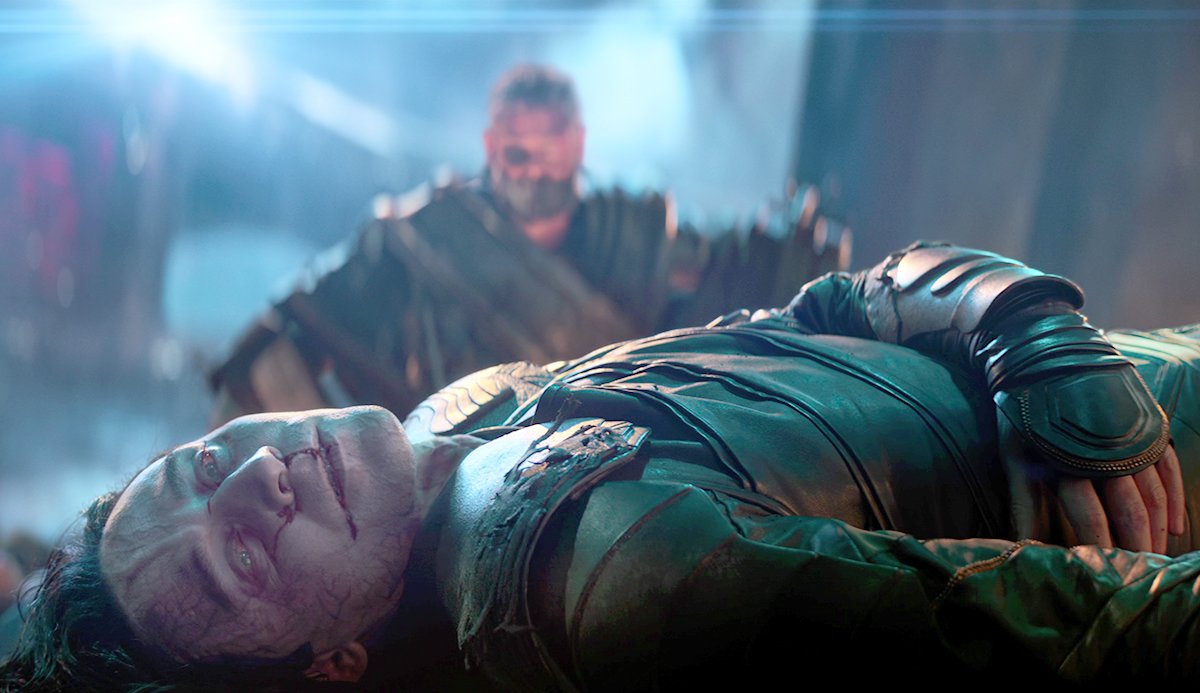
Marvel covers the spectrum of human responses to trauma through the Avengers. Screenshot from Avengers: Endgame.
“That’s not cinema,” legendary director Martin Scorsese said about superhero movies during a 2019 interview for Empire magazine. “It isn’t the cinema of human beings trying to convey emotional, psychological experiences to another human being,” he continued, speaking specifically about the Marvel Cinematic Universe.
But beneath the spectacle of special effects, Marvel movies convey deep messages about the human experience. Just listen to the unbridled emotion elicited from audiences during the epic portal scene in Avengers: Endgame.
The differing ways humans respond to traumatic events are among the emotional and psychological experiences Marvel movies convey; everyone experiences trauma and post-traumatic stress differently. Focusing on the four primary Avengers, Marvel is able to subtly portray authentic responses to trauma, such as PTS, without sacrificing lighthearted entertainment.
Iron Man/Tony Stark
The genius, billionaire, playboy philanthropist was the seed responsible for sprouting the Marvel Cinematic Universe, and his trauma started in the first scene of the first movie. Tony Stark (Robert Downey Jr.) survives an ambush in Afghanistan, escapes captivity, and continues accruing traumatic experiences for eight more films. Fortunately for Stark, he doesn’t begin noticing any negative effects from his superhero lifestyle until Iron Man 3. Unfortunately for Stark, his response to trauma is debilitating anxiety.
Stark’s anxiety comes in the form of severe panic attacks that catch him at inopportune moments. After five years of battling evil as Iron Man, Stark finds himself most comfortable during conflict and most vulnerable in times of relative peace. He suffers three major panic attacks during Iron Man 3. The first is while he shares a meal in a restaurant with his close friend War Machine. The second is when he’s alone with a small child — the least threatening kind of person to be around. He has the final panic attack when he’s driving alone on a quiet road. All are instances in which Stark is as far away from danger as he ever is during his 10-year arc.
Thor
Thor (Chris Hemsworth) processes trauma differently. Following the events of Avengers: Infinity War, he struggles to accept his perceived failure to save half of the universe from Thanos. Faced with the deaths of his friends, Thor is consumed by depression.
When Thor resurfaces in Endgame, he’s obese and drunk. His status as “fat Thor” provides a lot of funny moments, but it also shows the extent of his lost self-worth. He blames himself for the loss of everyone close to him and reacts by slowly destroying himself through neglect. Ultimately, Thor overcomes his depression by ceasing to self-isolate and finding new purpose in the fight against Thanos.
Captain America/Steve Rogers
Captain America (Chris Evans) seemingly handles trauma by continually exposing himself to it. Granted, he is a superhero, so it would be dull if Steve Rogers walked away from all the traumatic events that make the movies. But his insistence on continually injecting himself into the center of conflicts is a normal reaction to trauma. How many veterans return to combat after their military service by way of contracting?
Rogers is simply more comfortable when he’s fighting. He’s good at it, and he knows it. Without conflict, Rogers isn’t sure what to do with himself. He passes on the opportunity for peace when he shrugs off the Sokovia Accords and sabotages his relationships to keep fighting in Captain America: Civil War. Ultron even calls Rogers out on his inability to hang up his shield when he says, “Captain America. God’s righteous man. Pretending you could live without war.”
He is self-aware and even leads a group therapy session where he advises others to “take baby steps to try and become whole again.” Despite that self-awareness, Rogers doesn’t seem to take those baby steps himself until the end of Endgame.
Hulk/Bruce Banner
Friedrich Nietzsche cautioned, “Whoever fights monsters should see to it that in the process he does not become a monster.”
Bruce Banner (Edward Norton, Mark Ruffalo) literally becomes a monster every time he needs to fight, and each time he taps into that side of himself, he struggles to control it. It takes the gentle aid of Black Widow to bring Banner back from the Hulk, a transition many people who survive trauma might recognize.
While Rogers only values himself for his fighting skills, Banner is nearly the opposite. He hates who he becomes when it’s time to fight and struggles to reconcile the different sides of his personality.
Scorsese may equate the second-highest-grossing film of all time (Endgame) to cheap amusement, but he also hasn’t watched an entire Marvel film. For fans, there’s no denying the emotional punch of watching the Avengers rally together in Endgame — a payoff 10 years in the making that lands like Mjölnir to the gut. But the emotional payoff hits harder, thanks to the way Marvel used the not-so-serious genre of superhero movies to effectively shed light on the spectrum of responses to real trauma.
Read Next: ‘I’m Captain America’ — Marvel Gives America the Hero It Needs in Falcon Finale

Mac Caltrider is a senior staff writer for Coffee or Die Magazine. He served in the US Marine Corps and is a former police officer. Caltrider earned his bachelor’s degree in history and now reads anything he can get his hands on. He is also the creator of Pipes & Pages, a site intended to increase readership among enlisted troops. Caltrider spends most of his time reading, writing, and waging a one-man war against premature hair loss.
BRCC and Bad Moon Print Press team up for an exclusive, limited-edition T-shirt design!
BRCC partners with Team Room Design for an exclusive T-shirt release!
Thirty Seconds Out has partnered with BRCC for an exclusive shirt design invoking the God of Winter.
Lucas O'Hara of Grizzly Forge has teamed up with BRCC for a badass, exclusive Shirt Club T-shirt design featuring his most popular knife and tiomahawk.
Coffee or Die sits down with one of the graphic designers behind Black Rifle Coffee's signature look and vibe.
Biden will award the Medal of Honor to a Vietnam War Army helicopter pilot who risked his life to save a reconnaissance team from almost certain death.
Ever wonder how much Jack Mandaville would f*ck sh*t up if he went back in time? The American Revolution didn't even see him coming.
A nearly 200-year-old West Point time capsule that at first appeared to yield little more than dust contains hidden treasure, the US Military Academy said.












